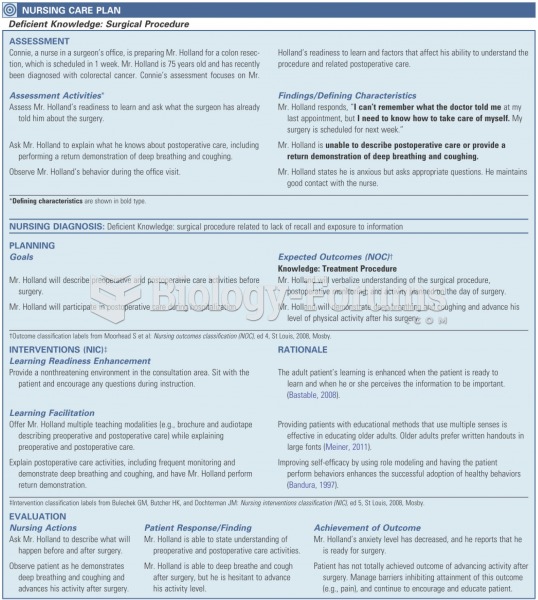Answer to Question 1
2
Rationale 1:Increased bloodpressure is incorrect. The client is developing symptoms of alkalosis.
Rationale 2: Most of the adverse effects of sodium bicarbonate therapy are the result of alkalosis caused by too much bicarbonate ion. Symptoms can include confusion, irritability, slow respiration rate, and vomiting. Simply discontinuing the sodium bicarbonate infusion often reverses these symptoms; however, potassium chloride or ammonium chloride may be administered to reverse the alkalosis.
Rationale 3:Worsening of acid is incorrect. The client is developing symptoms of alkalosis.
Rationale 4:Expected response to treatment is incorrect. The client is developing symptoms of alkalosis.
Global Rationale: Most of the adverse effects of sodium bicarbonate therapy are the result of alkalosis caused by too much bicarbonate ion. Symptoms can include confusion, irritability, slow respiration rate, and vomiting. Simply discontinuing the sodium bicarbonate infusion often reverses these symptoms; however, potassium chloride or ammonium chloride may be administered to reverse the alkalosis.
Answer to Question 2
4
Rationale 1:The nurse should first determine when the client takes the medication, and advise the client to take it several hours before bed.
Rationale 2:The nurse should first determine when the client takes the medication, and advise the client to take it several hours before bed.
Rationale 3:The nurse should first determine when the client takes the medication, and advise the client to take it several hours before bed.
Rationale 4: Take diuretics at least 2 hours before bedtime to avoid nighttime diuresis.
Global Rationale: Take diuretics at least 2 hours before bedtime to avoid nighttime diuresis. The nurse should first determine when the client takes the medication, and advise the client to take it several hours before bed.







